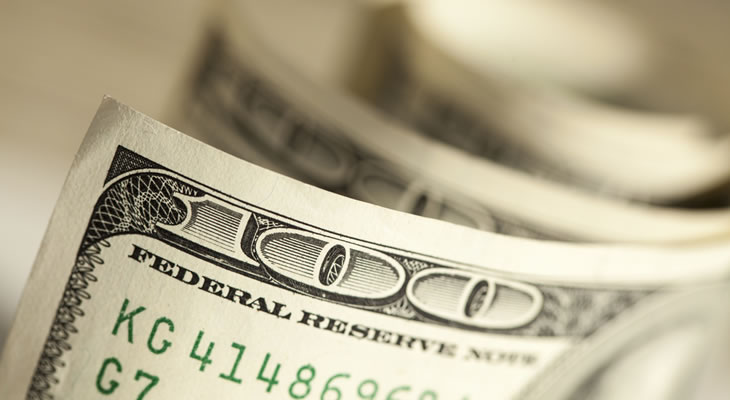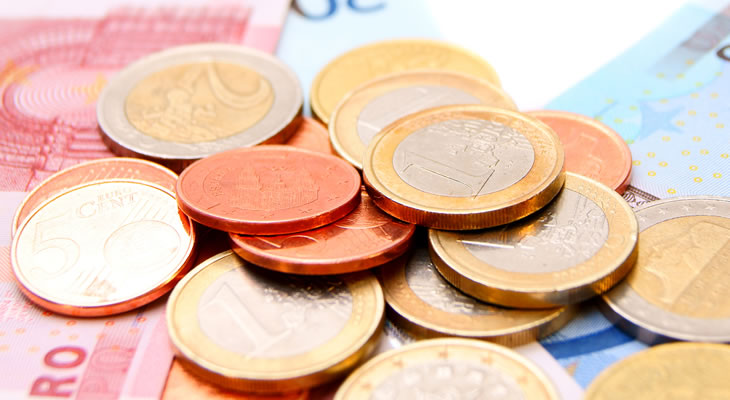The European Central Bank (ECB) may face increased pressure to act following poor inflation data, weakening EUR USD exchange rate forecasts.
- EUR USD weakened by inflation data – Price growth remains subdued
- More ECB stimulus on the way – Data suggests enormous stimulus measures still not enough
- US Dollar advances on Fed bets – Markets reinterpret Janet Yellen’s ‘disappointing’ Jackson Hole speech
- EUR USD exchange rate forecast – Long term Euro exchange rates could decline
While looser Eurozone monetary policy seems likely, US policy looks set to tighten before the end of the year, potentially putting USD EUR exchange rates on a bullish uptrend.
Long-Term Euro Exchange Rate Forecast Softened by Sluggish Inflation Data
A run of below-forecast data recently clouded the long-term outlook for the EUR USD exchange rate thanks to falling confidence and inflation data. Eurozone economic confidence, the business climate indicator, industrial confidence and services confidence all weakened further-than-expected. Consumer confidence technically fell, as despite the latest measure holding steady the previous reading was revised upwards.
Inflation data for Germany also disappointed, showing a weaker state of price growth in the Eurozone’s powerhouse economy than had been predicted. On the year, preliminary figures indicated an unchanged pace of inflation at 0.4%, instead of rising to 0.5% as forecast, while there was no growth on the month. Eurozone inflation figures have also disappointed, with the core index growing 0.8% and the non-core index advancing 0.2%. In both cases the results disappointed forecasts by ten basis points.
With the next European Central Bank meeting a few days away, the ECB won’t be using the latest inflation data when setting monetary policy going forwards. ING Chief Economist Carsten Brzeski explains;
‘Today’s German inflation data will not make the ECB’s already difficult life any easier. Ahead of next week’s policy meeting, available data has been too inconclusive to justify any (significant) change to the ECB’s current monetary policy stance. Normally, the staff projections have a so-called cut-off date some ten days ahead of the ECB meeting. This would mean that this week’s set of macro data will not have any impact on the ECB’s staff projections, leaving the projections with a rather benign reaction to the Brexit vote and no hard macro data after the second quarter.’
Regardless, markets are pricing in an increasing likelihood that the ECB will increase monetary stimulus measures in the near-term. The release of the latest Markit manufacturing PMIs for the Eurozone has done nothing to improve the outlook for the currency bloc, showing a greater-than-expected weakening in the sector for France, Germany and Italy, with the latter falling into contraction.
US Dollar Long-Term Forecasts Advance on Rising Interest Rate Hike Bets

The focus of investor attention in recent days was the Federal Reserve’s Jackson Hole policy symposium. Fed Chair Janet Yellen was due to speak on Friday 26th of August, with investors eagerly awaiting an update on her outlook regarding US monetary policy. Expectations had been for a hawkish position from Yellen, with clear signals that interest rates would be increased in the upcoming September meeting.
In those respects, the Fed Chair failed to deliver, offering a much more cautious assessment of US economic conditions. While stating that the case for tightening monetary policy had been strengthened by recent data, Yellen reiterated the Fed’s current catchphrase; any future hikes will be data-dependent. This, compared to what the markets had hoped for, was rather dovish. The US Dollar subsequently declined.
However, after the weekend, investors were in a better mood. Yellen’s words still suggested that tighter policy was coming; at the time of writing Fed Funds futures had an interest rate increase pegged for December, with a 44% chance that rates will be between 0.5%-0.75% basis points and an 11% chance rates will be between 0.75%-1.00%. Yellen may have disappointed but, considering before her speech traders had been expecting the next interest rate increase would not take place until May 2017, there was still a good reason to be bullish on USD.
Two recent speeches by other Federal Reserve officials have largely helped bets of tighter monetary policy. Charles Evans did suggest that, thanks to continuing expectations of loose monetary policy from the markets, the Fed would be able to leave interest rates at low levels without risking damage to the US economy. However, the influential Boston Fed President Eric Rosengren suggested that low interest rates could create weakness that would exacerbate the effects of a recession, indicating a desire to tighten policy.
Later, poor labour market data ensured rate hike bets continued to seesaw. The non-farm payrolls figure printed at 151k, dashing expectations of an 180k increase in employment, while unemployment defied predictions of a ten basis point fall to remain at 4.9%. Average wage growth also slowed more-than-forecast. Overall this pointed to the job market being in a weaker state than initially thought, undermining the case for the Federal Reserve to hike rates in 2016.
Euro US Dollar (EUR USD) Exchange Rates
At the time of writing the Euro US Dollar (EUR USD) exchange rate was trending around 1.1134, while the US Dollar Euro (USD EUR) exchange rate was trading in the region of 0.8979.
The EUR USD exchange rate Relative Strength Indicators (RSI) had fallen to 43.77. This was the latest move in a sustained downtrend which began on the 25th of August, although the pace of this decline had slowed markedly, suggesting the pairing could be nearing the start of an uptrend.


Comments are closed.